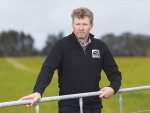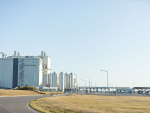Dairy farmers generally are in good spirits despite Fonterra last week lowering its milk price forecast, says Feds dairy deputy chairman Wayne Langford.
Fonterra lowered its 2018-19 milk price forecast range from $6.75/kgMS to $6.25 to $6.50/kgMS because of increased milk production locally and overseas.
“I don’t think it will be unexpected,” Langford told Dairy News.
“It highlights the great tool the Global Dairy Trade model gives us enabling farmers potentially to see it coming a bit.
“The prices at the last couple of auctions haven’t been overly flash so it is not unexpected.
“It is a long way to go; it’s just the start of the season. We would certainly be hoping the powder price might pick up a bit to achieve a decent payout.
“If prices stay in the $6/kgMS [region] most farmers will be pretty happy.”
Farmers will be prudent. “The old adage says you don’t spend your wool cheque until you have got it. It is the same with dairy farming. You have to do your budget conservatively and if you get a bit extra at the end you can use it then.”
Farmers in general are now in good spirits, he believes. “It has been a pretty kind spring, as long as we get a bit of rain in the next week or so.
“A lot of farmers have got the joy back in farming compared to the last couple of seasons, so that is all positive.
“The lowering of the forecast is no reflection on Fonterra’s performance; it is simply a reflection of international milk prices.”
Fonterra chief executive Miles Hurrell says global demand is simply not matching current increases in supply.
“I know how hard it is for farmers when the forecast farmgate milk price drops, but it’s important they have the most up-to-date picture so they can make the best decisions for their farming businesses.
“We are still seeing strong production coming from Europe, US and Argentina. While the hot weather in Europe has slowed down the region’s production growth, it is still tracking ahead of last year. US milk production is up slightly and Argentina’s is up 6.8%.
In New Zealand, the season has got off to a positive start, mainly thanks to good weather.


















